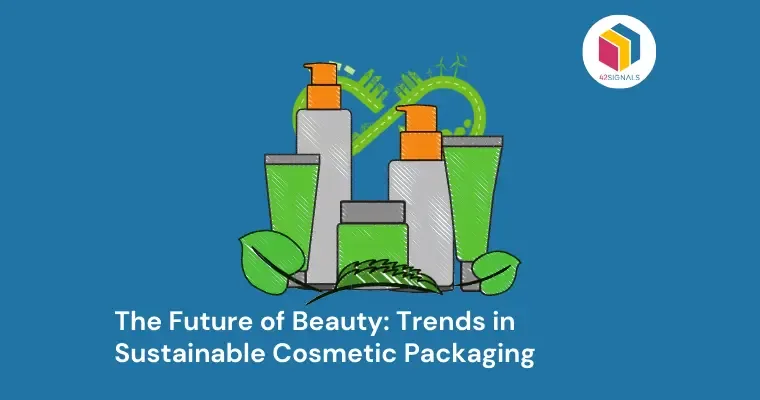What’s the need for sustainable cosmetic packaging?
As consumers become increasingly aware of the environmental impact of their choices, sustainable practices are becoming more important than ever. This is especially true in the beauty industry, where single-use plastics and non-recyclable materials have long been a part of product packaging. However, the tide is shifting as companies embrace eco-friendly alternatives to meet consumer demands for sustainability.
Sustainable cosmetic packaging is not just a trend; it’s a necessity born out of the urgent need to address the global waste crisis. With millions of tons of plastic entering our oceans each year and landfills overflowing with non-biodegradable waste, the pressure on industries to act responsibly has never been greater. Beauty brands, in particular, have an opportunity to lead by example, given their massive global reach and influence.
This shift toward sustainable packaging reflects a broader cultural change: consumers want to align their purchasing habits with their values. They are no longer satisfied with just a good product; they want to ensure that the brands they support are actively working to reduce environmental harm. Companies that fail to adapt risk alienating a growing base of eco-conscious customers.
Let’s dive into the top trends in sustainable cosmetic packaging and explore their implications for the future of the beauty industry.
Sustainable Cosmetic Packaging: The Future
Biodegradable Materials:
One of the most innovative and impactful trends in sustainable cosmetic packaging is the use of biodegradable materials derived from plant-based sources such as bamboo, sugarcane, or cornstarch. Unlike traditional plastic, which can take hundreds of years to decompose, biodegradable packaging breaks down naturally over time, often within months. This significantly reduces waste and minimizes the environmental footprint of beauty products.
These materials not only serve environmental purposes but also provide a unique aesthetic appeal. Bamboo, for instance, offers a sleek, natural look that aligns with the minimalist design trend. Sugarcane-derived bioplastics can mimic the durability and appearance of conventional plastics without the associated environmental costs.
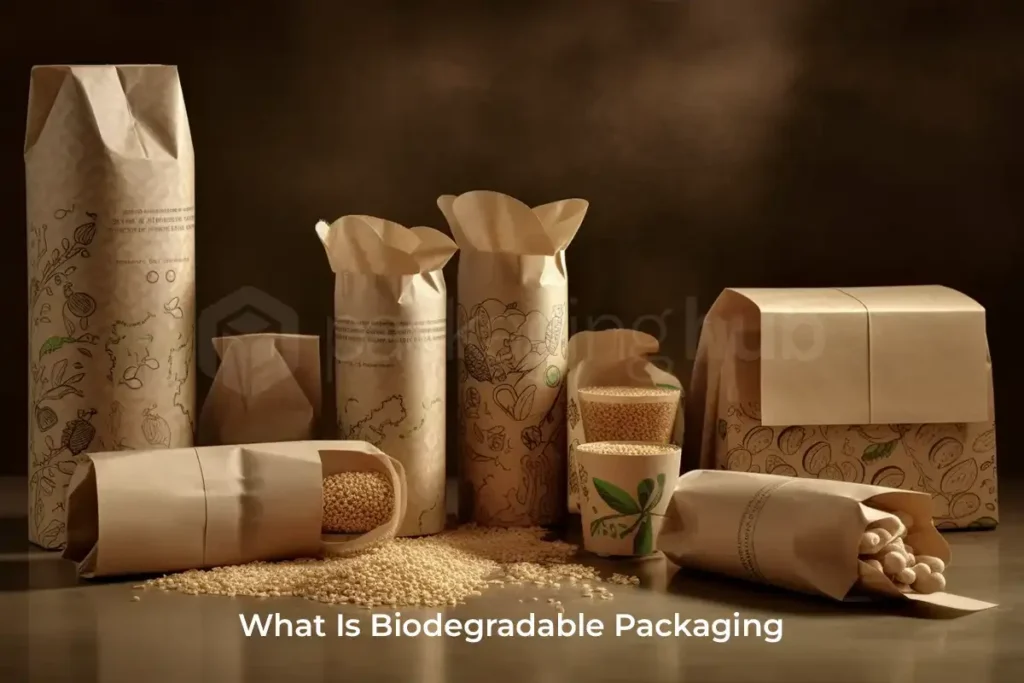
Image Source: Packaging Hub
For brands, adopting biodegradable materials is more than just an environmental choice; it’s a powerful marketing tool. Companies that invest in these materials signal their commitment to sustainability, which resonates with eco-conscious consumers. Additionally, biodegradable packaging can help brands stand out in an increasingly crowded market where innovation and responsibility go hand in hand.
Minimalist Design in Sustainable Cosmetic Packaging:
Minimalism is not just a design philosophy—it’s an essential aspect of sustainable cosmetic packaging. By simplifying packaging designs, brands can significantly reduce waste and production costs. A minimalist approach often involves using fewer materials, avoiding excessive embellishments, and opting for single-material packaging that’s easier to recycle.
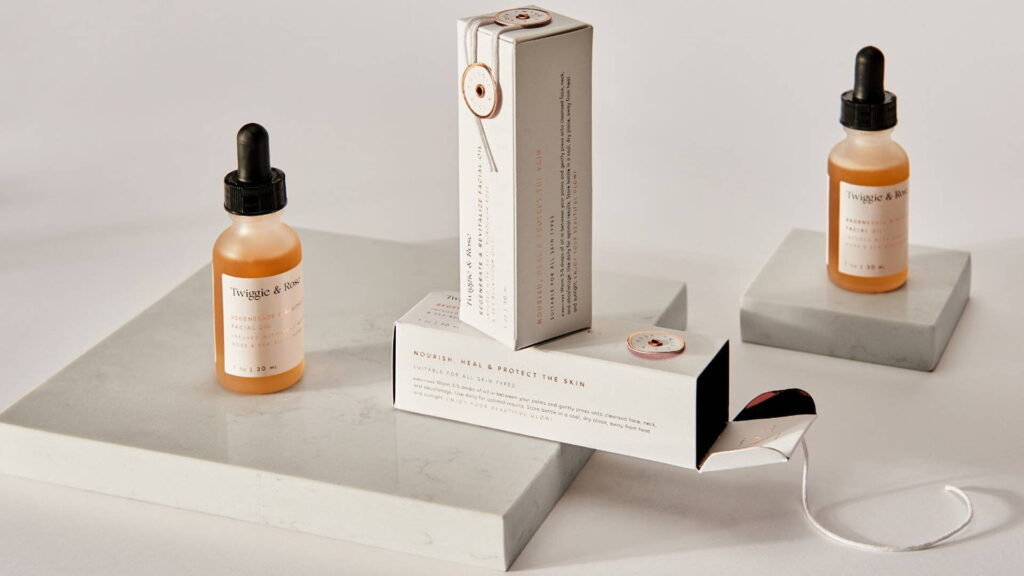
Image Source: PackMojo
Minimalist designs also cater to modern aesthetic sensibilities. Today’s consumers appreciate clean, uncluttered visuals that reflect a brand’s commitment to authenticity and sustainability. Minimalist packaging often feels more premium, creating a perception of quality while staying eco-friendly.
Moreover, reducing packaging complexity makes it easier for consumers to recycle or compost. For example, a simple cardboard container is far more recyclable than one made of mixed materials like plastic and metal. This streamlined approach benefits both the planet and the consumer, making sustainable choices more accessible and appealing.
Refillable Systems:
The rise of refillable systems marks a revolutionary shift in how beauty products are packaged and consumed. Instead of discarding containers after a single use, refillable systems allow consumers to purchase refills, extending the lifespan of the original packaging. This reduces the volume of waste generated and promotes a culture of reusability.
Brands like L’Occitane, Kiehl’s, and Fenty Beauty have embraced this trend, offering refill stations in stores or providing refill pouches for home use. Some companies even incentivize customers to participate in refill programs by offering discounts or loyalty points. This not only encourages sustainable practices but also fosters customer loyalty.
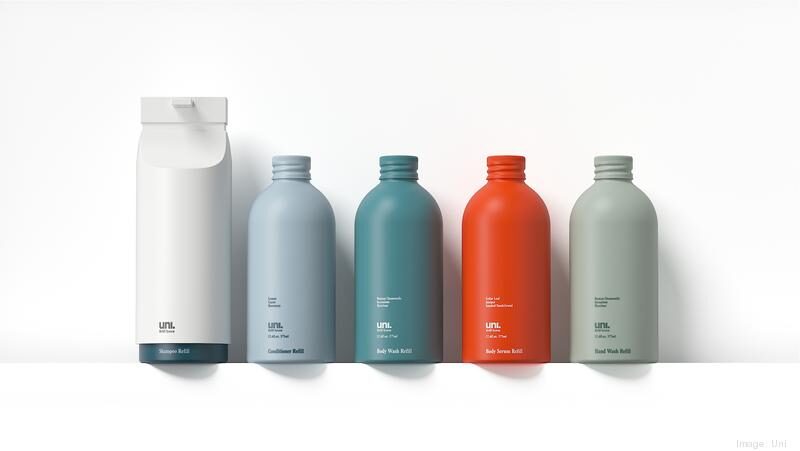
Image Source: The Business Journals
Refillable systems are especially appealing for high-consumption products like shampoos, lotions, and foundations. By making it convenient and cost-effective for customers to choose sustainable options, brands can drive long-term behavioral changes that benefit both the environment and their bottom line.
Recycled Containers:
Using recycled materials to create new packaging is a cornerstone of sustainable cosmetic packaging. Post-consumer recycled (PCR) plastics, recycled glass, and aluminum are becoming increasingly popular choices for beauty brands seeking to minimize their reliance on virgin materials. By repurposing materials that would otherwise go to waste, brands can reduce their environmental impact and contribute to a circular economy.
Recycled packaging is not only environmentally friendly but also highly versatile. For example, glass and aluminum containers are durable, reusable, and endlessly recyclable. Meanwhile, PCR plastics offer a practical solution for products that require lightweight, shatterproof packaging, such as lotions or creams.
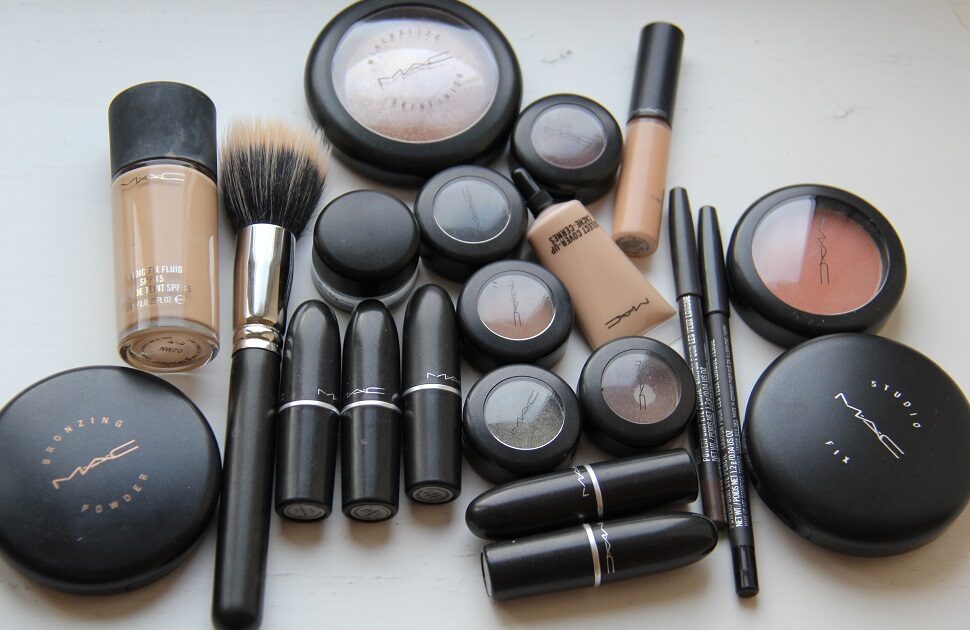
Image Source: MAC Cosmetics Recycle Program
Brands that adopt recycled materials are often transparent about their efforts, proudly displaying this information on their labels. This transparency builds trust and demonstrates a genuine commitment to sustainability. Moreover, recycled packaging helps conserve energy and resources, making it a win-win for companies and the environment alike.
Transparency & Labeling:
Clear and honest communication is a critical component of sustainable cosmetic packaging. Today’s consumers are more informed than ever, and they demand transparency from the brands they support. They want to know where materials come from, how they’re sourced, and whether they’re truly sustainable.
Brands that provide detailed information about their packaging materials and practices can build stronger connections with their audience. For instance, labels that indicate whether a product is made from recyclable, biodegradable, or post-consumer materials empower consumers to make informed choices.
Transparency also extends to the labeling process itself. Many brands are now using biodegradable or compostable labels and inks, ensuring that every aspect of their packaging aligns with their sustainability goals. By taking a holistic approach, companies can demonstrate their dedication to ethical business practices while educating consumers about the importance of sustainability.
Conclusion on Sustainable Cosmetic Packaging
The future of beauty lies in sustainability, and sustainable cosmetic packaging plays a critical role in achieving this goal. From biodegradable materials to refillable systems, there are numerous ways for companies to minimize their ecological footprints while still delivering high-quality products.
For shoppers, eco-friendly shopping is easier than ever today; consumers can spend their money on products and brands that resonate with their values.
